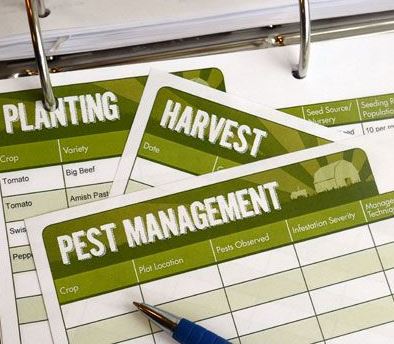Keeping records: An aid to manage and make money in your farm

Do you keep accurate records in your farm?
Keeping records simply refers to collecting relevant information that can help you make good decisions and keep track of activities, production and important events on the farm.
Keep records that are simple, systematic, complete and true.
Why are records important?
- To keep track of all animals
- Control inbreeding and aid in breeding planning and production.
- To rationalize labor
- To plan for and manage the feeds
- Keeping track of treatment regimens and finding effective treatments.
- To assess how much money your business is making.
- Helps you secure credit/ loans from cooperatives banks and other lenders.
- Helps you attract potential partners to the business.
- In case you want to sell your enterprise, it helps you demonstrate to the buyer the exact value and bargain for a better price.
Regardless of the type of livestock you’re keeping, the following are the main types of records to keep in your farm;
- Identification Records
The method should be cheap, not harming the animal, reliable to read at a distance of about 2-3 meters.
Identification of animals is usually through use of numbering, by marking the animal and by the description of certain characteristics of the animal or taking photos, giving animals names.
Identification can be: temporary by use of collars on the neck and legs and paints and dyes or permanent such as by using ear tags, ear-notching and tattoos
- Breeding Records
They measure productive efficiency of the herd and enable selection.
An accurate up-to-date breeding record of each individual female is necessary.
Data that is most important in breeding records: name of parents and grandparents (pedigree), fertility (date of service and giving birth), birth details (number, weight of newborns)
- Production Records
Are important in measuring the performance of individual animals and the herd.
They contribute greatly to the economic appraisal of the farm.
You are able to know how many products are available in a certain period: daily or weekly.
Records kept capture; animal products like eggs/hen/day and milk/cow/day, animals slaughtered in terms of weight, daily gain, and production period.
- Feeding Records
Contains information about the amount, type and quality of the feed.
Used for the planning activities related to feeds.
They should include; quantity and quality of fodder produced and available on the farm, feeding plan, leftovers and spoilage.
- Disease and Treatment Records
Keep track of the disease events which each animal is involved in during its lifetime.
It provides information about the health status of each individual animal and the whole heard.
Keeps track of withdrawal time for milk, eggs and meat after treatment with dewormers, acaricides and antibiotics.
Records include: disease occurrence and date, vaccination, dipping/spraying, treatment, de-worming and postmortem
- Financial / Economic Records
Records are kept for income-generating commodities help to see what the investment is, and what it costs to produce it.
Helps evaluate whether an investment is more than expenditure, and check if it enables and improves the production in future.
They provide you with information concerning the profitability of your farm, tax purposes and for the purpose of getting loans or credit.
They help in decision making at the right time. For example, is it profitable to feed concentrates? Is it advisable to apply for a loan or credit to invest in machinery or technology?
Record keeping is a must-include ingredient in a recipe for making a financially successful livestock enterprise. Think of your farm as a business.
Want to get latest farming tips and videos?
Join Us
Share this article on social
 The Standard Group Plc is a multi-media organization
with investments in media platforms spanning newspaper print operations,
television, radio broadcasting, digital and online services. The Standard Group
is recognized as a leading multi-media house in Kenya with a key influence in
matters of national and international interest.
The Standard Group Plc is a multi-media organization
with investments in media platforms spanning newspaper print operations,
television, radio broadcasting, digital and online services. The Standard Group
is recognized as a leading multi-media house in Kenya with a key influence in
matters of national and international interest.
 The Standard Group Plc is a multi-media organization
with investments in media platforms spanning newspaper print operations,
television, radio broadcasting, digital and online services. The Standard Group
is recognized as a leading multi-media house in Kenya with a key influence in
matters of national and international interest.
The Standard Group Plc is a multi-media organization
with investments in media platforms spanning newspaper print operations,
television, radio broadcasting, digital and online services. The Standard Group
is recognized as a leading multi-media house in Kenya with a key influence in
matters of national and international interest.







